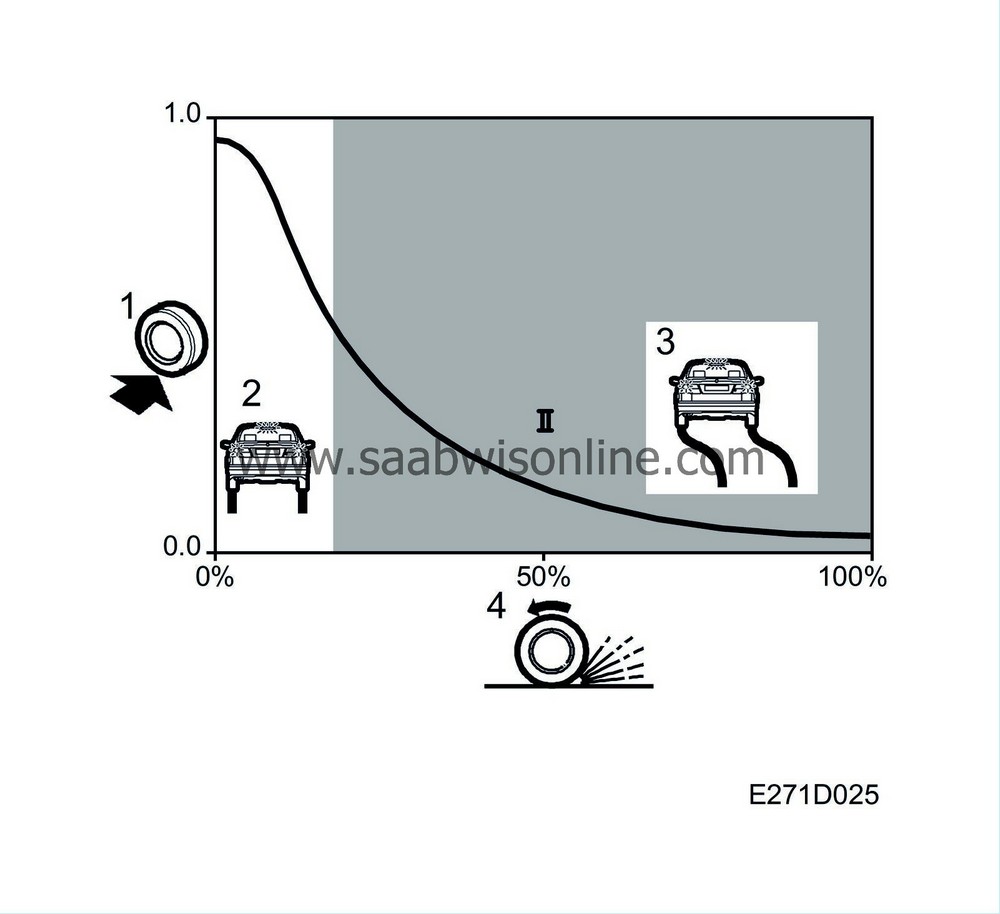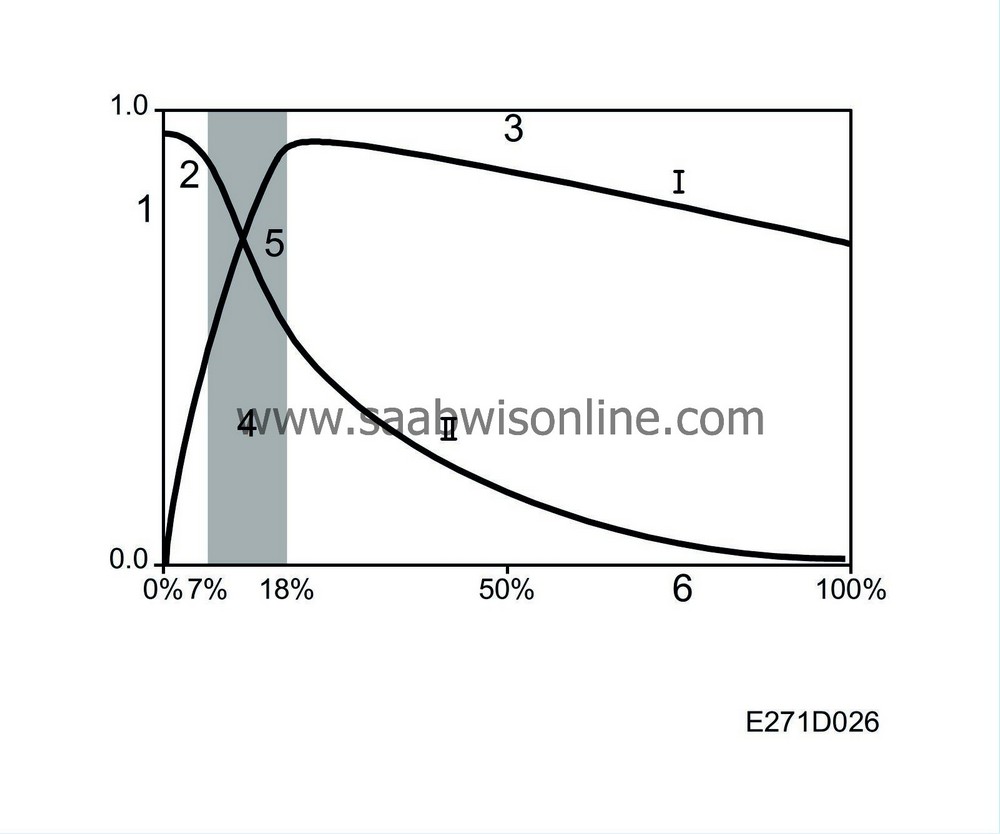ABS function
| ABS function |
Fig 1: Brake force as function of wheel slip.
Y-axis = Brake force
X-axis = Wheel slip
| 1. |
Brake force
|
|
| 2. |
Stable
|
|
| 3. |
Unstable
|
|
| 4. |
Wheel slip
|
|
The anti-lock braking system provides optimum braking force while retaining the car's directional stability.


Braking force/Wheel slip
The braking force is equal to the friction between the tyre and road surface. All braking causes a certain amount of wheel slip. Slip is 0% for a free-rolling wheel and 100% for a locked wheel.Starting from 0%, the braking force increases rapidly while wheel slip increases slowly until a maximum value is reached. Beyond this value, braking force decreases as wheel slip increases.
The wheel sensors provide information about the speed of each wheel. The TC/ABS control module measures the reference speed; normally the speed of the fastest rear wheel. This reference speed is then used to determine whether a wheel exceeds the limit of optimum slip.
Fig 2: Lateral force as a function of wheel slip.
Y-axis = Lateral force
X-axis = Wheel slip
| 1. |
Lateral force
|
|
| 2. |
Stable
|
|
| 3. |
Unstable
|
|
| 4. |
Wheel slip
|
|
Lateral force/Wheel slip
Maximum braking force (coefficient of adhesion) is reached at a point known as the limit of optimum slip. The section of the curve between 0% slip and the limit of optimum slip is known as the stable braking zone. The section of the curve between the limit of optimum slip and 100% slip is know as the unstable braking zone, as stable braking can not be achieved in this zone. This is because the wheel quickly becomes locked after the limit of optimum slip has been reached, unless the braking force is immediately reduced.Slip also occurs when lateral force is applied on the tyre (e.g. on cornering). Figure 2 shows how lateral force drops with increasing wheel slip. At 100% slip, that is to say when the wheels lock up, no lateral force remains for steering and the driver will no longer have control over the vehicle.
The TC/ABS control module measures and compares the wheel speed of each rear wheel and can therefore determine whether the car is cornering.

| 1. |
Braking force/Lateral force
|
|
| 2. |
Stable
|
|
| 3. |
Unstable
|
|
| 4. |
ABS operating range
|
|
| 5. |
Limit of optimum slip
|
|
| 6. |
Wheel slip
|
|
The graph shows the two curves with the range within which the ABS system is operative superimposed. During braking, the system allows braking force to increase to a point just before the limit of optimum slip and then prevents it from increasing further. The system then modulates the hydraulic pressure to keep the braking force as close as possible to the optimum value (the limit of optimum slip) regardless of how hard the brake pedal is depressed.
Since the ABS prevents the limit of optimum slip from being exceeded, the tyres never enter the unstable zone. This preserves some lateral force to ensure that steering control is retained (curve II).
Depending on the friction of the road surface and speed of the car, the ESP control module allows slip values of between 7% and 18%.


